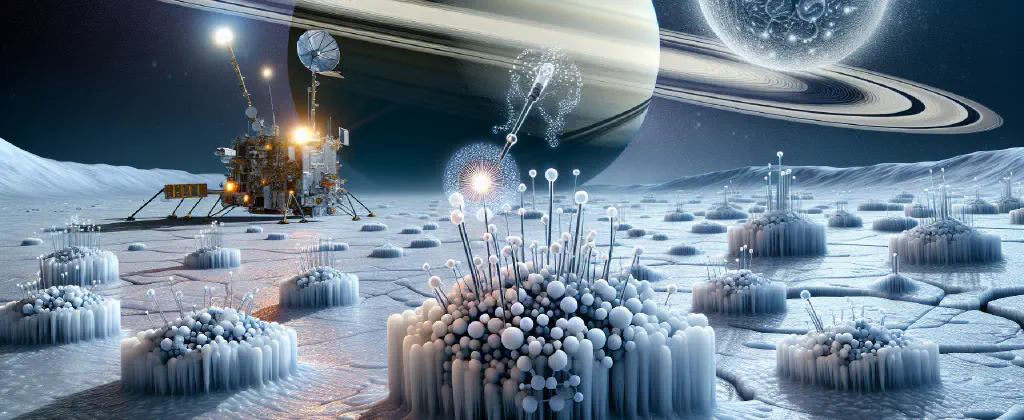18. December 2023
NASA study finds life-sparking energy source and molecule at Enceladus

Saturn’s moon Enceladus continues to captivate scientists and space enthusiasts alike. The Cassini mission recently made a breakthrough discovery, providing strong evidence for the existence of key ingredients for the origin and sustenance of life.
Enceladus: A Potential Host for Life
The ocean beneath Enceladus’ icy outer shell has long been of interest to researchers due to its potential to host life. Previous studies have detected essential components, such as water and organic compounds, on this intriguing moon. Now, scientists have found even more compelling evidence.
Hydrogen Cyanide: A Vital Molecule for Life
The researchers have discovered hydrogen cyanide at Enceladus, a molecule that plays a crucial role in theories on the origin of life. Hydrogen cyanide is considered a starting point for the formation of organic molecules and the development of life as we know it. Its presence is a strong confirmation that the necessary building blocks for life exist on this distant moon.
Unidentified Energy Source
What sets Enceladus apart is the unidentified energy source discovered in its subsurface ocean. The researchers have detected several organic compounds that can serve as fuel for organisms, suggesting the presence of a powerful energy source that could potentially support life. This finding challenges previous assumptions about the amount of chemical energy available on Enceladus.
Paths to Sustaining Life
The study also uncovered evidence of oxidation, indicating the existence of multiple chemical pathways that could sustain life in Enceladus’ subsurface ocean. These pathways provide potential explanations for how organisms could thrive and survive in such an extreme environment.
Statistical Analysis of Cassini Data
To arrive at these groundbreaking conclusions, the researchers used statistical analysis to analyze data collected by NASA’s Cassini mission. The ion and neutral mass spectrometer on board Cassini provided valuable insights into the composition of Enceladus’ plumes.
Increasing the Likelihood of Life
The newfound evidence suggests that Enceladus may possess more chemical energy than previously believed, significantly increasing the likelihood of life existing in its ocean. While the study does not provide definitive proof of life on Enceladus, it adds yet another piece to the puzzle and supports the theory that this moon is a promising candidate for extraterrestrial life.
Testing Chemical Pathways for Life
One significant outcome of this study is that it lays out chemical pathways for the potential existence of life on Enceladus. These pathways can now be tested in laboratory settings, enhancing our understanding of the conditions necessary for life’s emergence and evolution.
Cassini: Unraveling the Secrets of Saturn’s Moons
The Cassini mission has been instrumental in unlocking the mysteries surrounding Saturn and its moons. Enceladus, in particular, has been a primary focus, and its latest discovery further solidifies the moon’s significance in our search for extraterrestrial life. The mission continues to provide new insights, fueling our curiosity about the potential for life beyond Earth.
As our knowledge expands, we draw closer to answering the age-old question: Are we alone in the universe? The discoveries made on Enceladus bring us one step closer to unraveling the enigma of life in the cosmos.
Source: https://phys.org/news/2023-12-nasa-life-sparking-energy-source-molecule.html